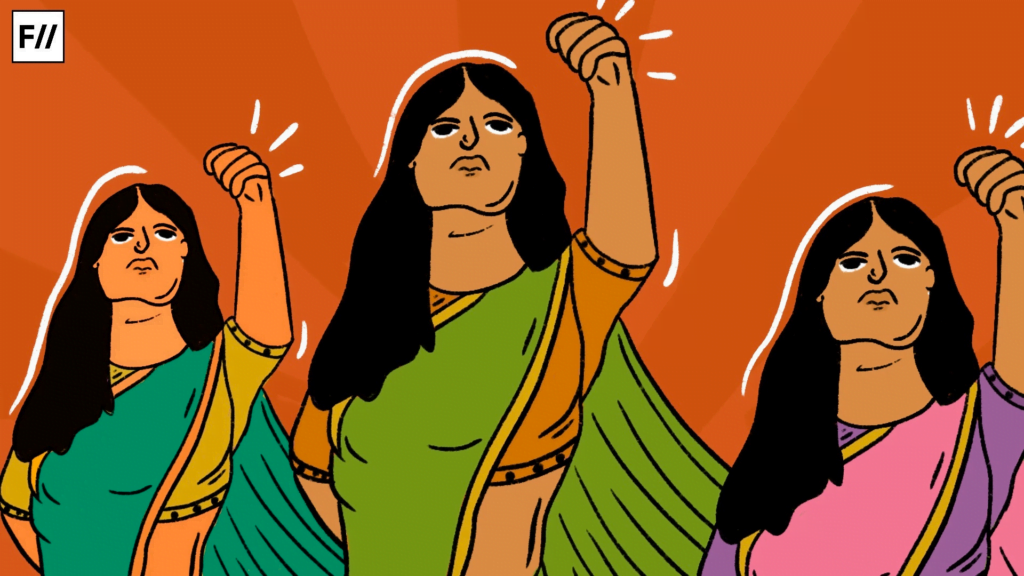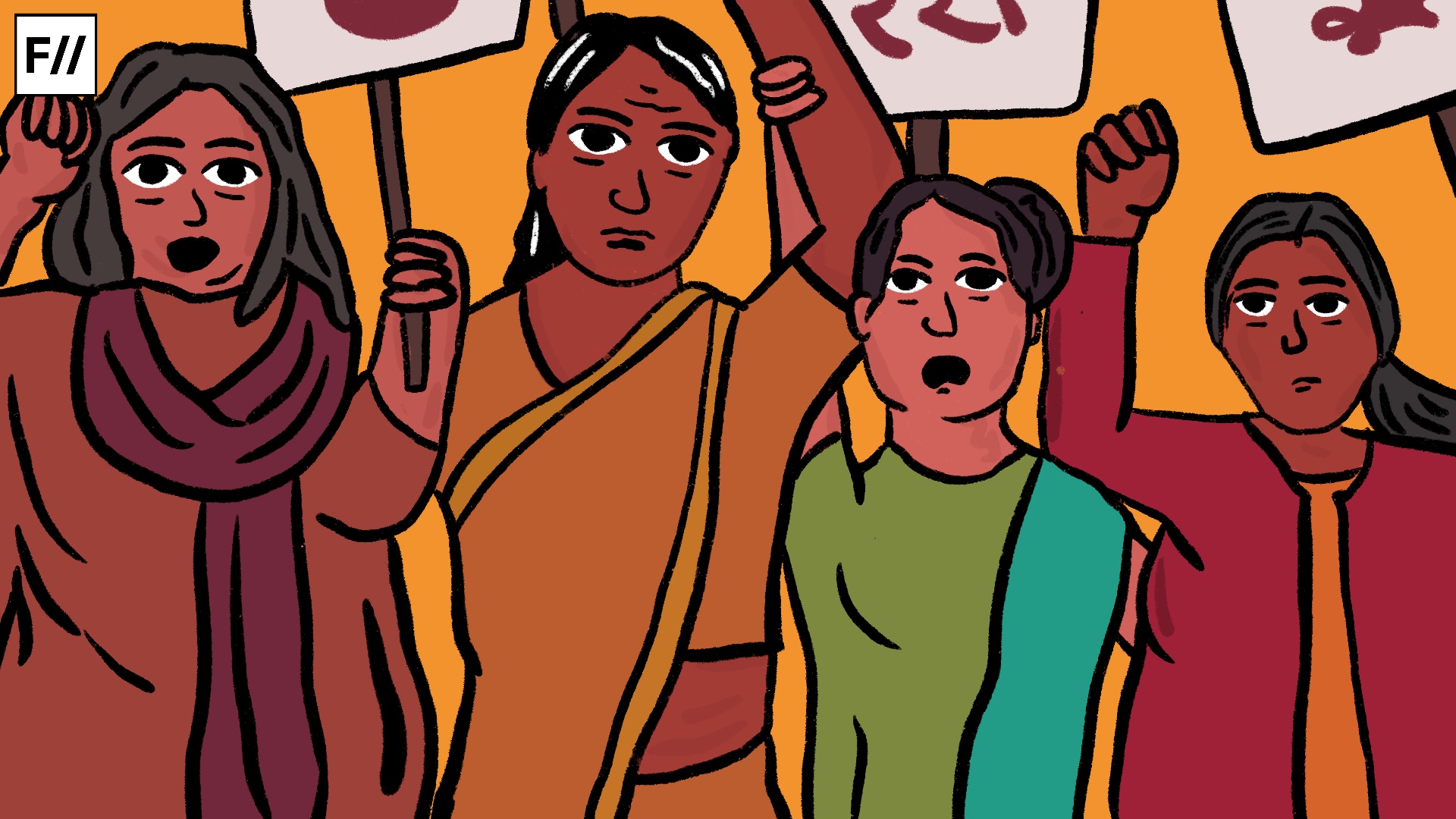The recent report of the National Sample Survey Office (NSSO) has revealed a grim reality for India’s young women – a majority of them are not participating in the workforce or pursuing education, raising concerns about the nation’s development. As per the statistical survey, 51.7% of India’s women are not in education, employment or training(NEET). The figure highlights a significant gender gap, especially when compared to the NEET population of men, which stands at a starkly low of 15.4%.
The fact that around 90% of the females who were surveyed reported attending to domestic duties indicates the persistence of traditional gender roles and the expectation that women should prioritise family responsibilities over work. As noted in a report by the World Bank, “social norms that prioritise women’s roles as wives and mothers are deeply ingrained in Indian society and often limit women’s access to paid work and education“.
The survey covers both non-formal education and formal education which can be acquired through formal schooling. Further, the employment and training information was taken on account of work/activity status during the last 7 days preceding the date of survey for each of the persons of the age group.
In its 78th round survey, NSSO carried out the ‘Multiple Indicator Survey (MIS)’ covering the entire country reaching across 2.76 lakh households. The primary objective of the MIS was to collect data for the generation of some important national indicators of Sustainable Development Goals (SDG).

The NEET population of women in urban areas stands at 50%, while in rural areas, it is slightly higher at 52.4%. Where there’s not much difference between the Urban and rural NEET divide of women, what are the reasons for women not being in training or in employment?
Also Read: Women Worst Affected By Unemployment During COVID-19
On looking up the follow-up questions to the theme, of what those members did during the last 7 days, around 90% of the females reported that they were attending domestic duties.
Why are so many women in India not participating in the labour force?
The fact that around 90% of the females who were surveyed reported attending to domestic duties indicates the persistence of traditional gender roles and the expectation that women should prioritise family responsibilities over work. As noted in a report by the World Bank, “social norms that prioritise women’s roles as wives and mothers are deeply ingrained in Indian society and often limit women’s access to paid work and education“.
Unpaid work, such as caregiving and household chores, is a significant and often overlooked aspect of women’s economic contributions in India and around the world. Women are often responsible for a range of household tasks, including cooking, cleaning, childcare, and caring for elderly or sick family members. According to the data from the National Sample Survey Office, women in India spend an average of 299 minutes per day on unpaid work, compared to just 97 minutes for men.
Also Read: What AISHE Report Says About Higher Education In Post-COVID India
As said by the famous economist Jayati Ghosh, ‘the biggest challenge to women’s workforce participation is social norms and attitudes that prioritise women’s role as caregivers and restrict their mobility and access to paid work outside the home’.

This unequal distribution of unpaid work has a number of negative impacts on women’s economic and social well-being. Lack of women’s access to outside not just deprives them of having a stable income but also deprive them of making substantial support systems outside their home. Author Shrayana Bhattacharya, in her book ‘Desperately Seeking Shahrukh’, writes “Those with greater access to jobs and other forms of capital outside the family unit are said to have higher ‘bargaining power’ within homes as they can always exit the family. Feminists have relied on such frameworks to explain women’s ill-treatment and undernourishment within homes in north India. Social norms ensure that women do not have any options for an exit, as they have limited control on property with compromised and insecure access to jobs and public spaces.”
Are they seeking work? Are they moving?
According to the NSSO’Ss report, while 65.3 percent of NEET men in India are available for or actively seeking employment, this is the case for only a mere 5.9 percent of NEET women, indicating lower inclination of women towards labour force participation.
In another section of the report, which intends to capture information on migration particulars, it was found that only 0.9% of Indian women migrate for education and only 1% for jobs or employment. The figure stands for 8%(Education) and 48.8%(employment) for males. Marriage remains the primary reason for women to migrate.
Also Read: Mechanisation Of Farming: Gender Roles, Caste, And Loss Of Employment For Women
Bhattacharya in her book also quotes the India Human Development Survey of 2012 stating, eighty per cent of Indian women need approval from a family member to go outside the home to visit a health centre. Three out of five women need permission to visit the local grocery store. In 2015, only forty-seven per cent of urban women could go unchaperoned to a public space.
As per the NSSOS’s report, the State of Punjab has the highest NEET population of women(Aged 15-29) at approximately 59.6%, followed by the state of Uttar Pradesh with 59.5%. Assam, West Bengal, Odisha and Bihar follow. The lowest percentage of Women NEET population is reported in the state of Arunachal Pradesh with only 5.8% of women not in Training, Education or Employment. This is followed by another Northeast state, i.e. Mizoram with a percent of 7.7 women.
Men’s lives continue relatively accountless and free. When young men are surveyed about why they migrate away from home for jobs, many say they moved out of a sense of adventure. Therefore, in a society where a woman’s daily activities are closely monitored and managed by her family or household, making the decision to migrate for education or employment are far-sighted.
Punjab with the highest and Arunachal Pradesh with least NEET population, says NSSO
As per the NSSOS’s report, the State of Punjab has the highest NEET population of women(Aged 15-29) at approximately 59.6%, followed by the state of Uttar Pradesh with 59.5%. Assam, West Bengal, Odisha and Bihar follow. The lowest percentage of Women NEET population is reported in the state of Arunachal Pradesh with only 5.8% of women not in Training, Education or Employment. This is followed by another Northeast state, i.e. Mizoram with a percent of 7.7 women.
Rohini Pande, Professor of Public Policy at Harvard Kennedy School said that, “reducing the burden of unpaid care work is essential to promote women’s participation in the workforce. This can be achieved through policies that support childcare and eldercare services.” Women’s disproportionate burden of unpaid care work is a major barrier to their participation in the workforce. Policies that support childcare and eldercare services can help reduce this burden and allow women to pursue education and employment opportunities.
Further, improvised state delivery mechanisms like the quality of education in rural areas, providing scholarships and financial assistance to women, and promoting vocational training programs can also reduce gender parity.
About the author(s)
Anuj is an urban practitioner and an independent writer. He's mostly interested in Feminist Urbanism and the intersection of various identities in the urban. He is a graduate of the Indian Institute for Human Settlements and has disciplinary training in Urban and Regional planning.




